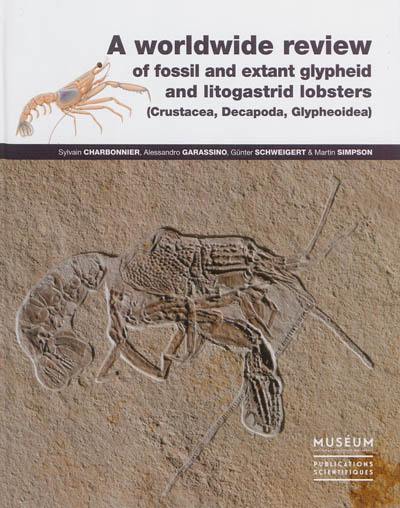
Fiche technique
Format : Relié
Nb de pages : 304 pages
Poids : 1250 g
Dimensions : 22cm X 28cm
ISBN : 978-2-85653-706-0
EAN : 9782856537060
A worldwide review of fossil and extant glypheid and litogastrid lobsters (Crustacea, Decapoda, Glypheoidea)
Quatrième de couverture
This volume is the first global review of the fossil and extant glypheoid lobsters (Eucrustacea, Decapoda, Glypheoidea) included in the families Glypheidae and Litogastridae. Glypheoid lobsters form a particularly specialised group of decapod crustaceans which are highly diversified in the fossil record. They appeared in the Triassic, prospered in the Jurassic, and subsequently declined between the Cretaceous and the Eocene. This group was thought to have become extinct in the Eocene until the discovery and description of two extant species from the Pacific. Since 1822, more than 120 species of glypheoid lobsters have been described, and numerous problems in their interprétation, and classification have accumulated in the literature. Consequently, a thorough review with a synoptic approach is presented here. The main purpose is to update the old literature and to revise ail the glypheoid genera and species based exclusively upon the type specimens. All the proposed diagnoses and descriptions are presented using standard criteria and well established descriptive terminology. Literal translations of the old diagnoses are now available in English for the first time, which will help to demonstrate how the historical concepts of glypheoids have evolved over time. Most of the taxa discussed are thoroughly documented and illustrated to allow comparisons between the original figures and the updated versions. Thus about 990 specimens have been studied and are illustrated in 583 figures. The ultimate aim of this volume is to bring together ail the data of the fossil and extant glypheoid lobsters, and to set a new définitive framework which might become a standard method for all decapod researchers.





